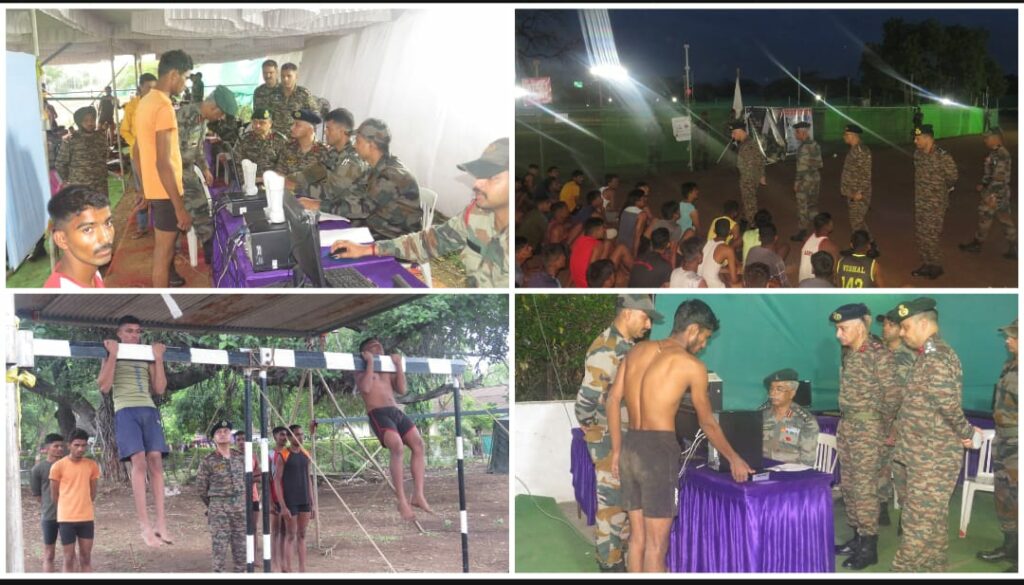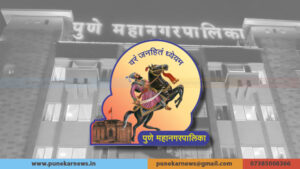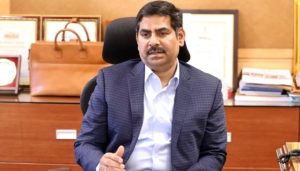AGNIVEER: CONTEXT AND CREDIBILITY

Brig S Sangwan
Pune, 30th December 2023: With information about Gen Naravane’s forthcoming book and a few excerpts being released into media, the Agniveers and Agnipath scheme debate has once again been rekindled with varying perceptions and frames of reference. It becomes prudent to contextualize the need and assess the credibility of the scheme.
The elected political govt is supreme in any democracy that has the public mandate to make decisions to deliver on their promises and the military is an instrument of the state like many others to be employed by the elected govt. With over 200 million still living below the poverty line, economic upliftment of the poor is a stated objective and priority of the govt.
Warfare has undergone a paradigm shift covering a wide spectrum with increasing diversity, complexity and intensity as has been evident in the environment especially in India over the last decade. Direct kinetic war involving military-to-military operations forms a smaller component of war today and is also an overly expensive option. The regional neighbours and the world were quite happy with a weak govt and resultantly a weak India as they were conveniently able to exploit our market, and resources and easily influence decision-making to their advantage. A nationalist govt coming to power happened to coincide with a global churn taking place with the Atlantic-centric power centre gradually shifting towards the Indo-Pacific ocean and the resultant conflict between the West and the East with India emerging as a power centre in between. A strong India is viewed as a disruption which isn’t conducive to the West or the East and both have been trying to bully India back to the easy-going attitude using various instruments of power like economic and commerce, technology, diplomatic, HR, legal including fabricated narratives and false allegations to pressurize the govt and economy. The three-warfare strategy of China comprising Public Opinion war, Psychological war and Legal war has been evident since they attempted salami slicing on the LAC in 2020 which was effectively blocked by the Indian Army. Although China has a larger economy and a larger military with a technological advantage over India in the context of an LAC conflict with constraints on the application of power, it is likely to be a stalemate resulting in greater damage and loss to Chinese global ambition which makes it unfavourable and reduces the probability of a direct kinetic conflict greatly. Even Xi is more likely to be focused on Taiwan than India as he stands to gain more there. In the event of hypothetical military aggression by China, India is free to expand the zone of conflict to include other theatres and checkmating their ambitions. Pak can be a nuisance but is no longer a very potent threat. The govt is focused on enhancing core strength by reducing poverty, enhancing self-reliance in technology and energy and strengthening the economy through inclusive empowerment of all strata of society, job creation and stable and strong macro-economics to find a rightful place in the global arena rather than relying on military power like others. In doing so India also offers a better alternative to the world.
We have been aware of the 2.5 fronts of threat which is more like 3 fronts today with the internal threat having overtaken the two external threats. Post-pandemic and post-OBOR, China’s image has taken a hit while India has gained in the world opinion. On the other hand, seeing the rapidly rising strength of India, efforts by external agencies using internal fractures to pull down the govt have been enhanced greatly.
A demographic change is also being forced on India through illegal aliens and induced and coerced conversions. What people often see as purely a religious activity of focus on temples has a bigger socio-economic aim and purpose. Apart from salvaging Hindu pride, religious tourism is being promoted for economic gains down to the lowest level of workers in the areas. The majority of the country has been fragmented for centuries which was exploited by the colonizers and unfortunately even by the domestic politics post-independence. Under the garb of minority rights, unfair and grave imbalances have emerged in the country with fundamentalism gaining strength and potency to unleash violence across the country. The civilizational war continues to date which unfortunately has expanded its footprint and permeated all aspects of life in the country except the military who continue steadfastly to be truly secular. These issues too have to be dealt with on priority or else they have the potential to subvert the entire development effort.
In the development of any country, youth have always played a significant role. India has a demographic advantage which ends in 2040 and presents a golden opportunity till then to empower and employ the youth constructively and give an economic boost to the GDP. With 50% population below the age of 25, it remains a very potent force but also a double-edged sword. If empowered and employed productively the youth can transform the country ushering in prosperity at a fast pace. However, if we fail to harness the youth power, it can also prove to be a black hole sucking in all our aspirations through crime, drugs and violence. Poor education, and unemployment exacerbated by the pandemic have taken the situation to a vulnerable near tipping point as shown by the agitations attracting the youth in recent times. Stone pelters are an example. We are aware of the generation wasted in Punjab by drugs but not of the drug epidemic in other states. A few youths from rural Haryana confided about pharmacies selling up to 300-400 syringes per day per village in a large number of villages and I suspect a similar state in a few other states. Even girls are becoming addicted.
While the military and veterans being concerned about security is axiomatic with a new recruitment policy involving a four-year contractual period in such an environment, the govt has to have a holistic perspective and set priorities to achieve its objectives for all citizens. With the military having proven its ability to handle any kinetic threats on our borders both on the West and North, the internal threats assume greater importance and criticality. To effectively neutralize this threat and constructively empower the youth of the country, the govt has come out with the Agniveers scheme after due discussion with army authorities.
In the early 90s, Outlook or Sunday magazine published an article covering a study on the Indian Army by Rand Inc. but lacking a long-term vision or need then I didn’t keep a copy or details of the article or the study. It pointed out two self-imposed restrictions of our Army.
Firstly, the study observed the Indian Army to be a victim of Protocol (conservative tradition-bound rigid outlook) and secondly of having too many Thinkers but too few Doers. Both seemed relevant and possibly cultural attributes in Indian society. Both have been noticed frequently in service and the revived debate on Agniveers also seems to stem from the two. The doubts being raised can’t be faulted though since the first response to any stimuli or change is an emotional response which prefers staying in the comfort zone. My initial reaction too was against the scheme with a thought that when the system isn’t broken why fix it the chatter on social media forced me to analyze it further and see beyond the surface and that changed my perspective.
The first concern being raised is about combat effectiveness due to the basic training duration being reduced from 42 weeks to 26 weeks. The reduced duration should be sufficient for the Drill, PT, weapons training, field craft and other essentials of basic training. In any case, his training doesn’t stop after 26 weeks and it just shifts to his unit for early integration and motivation which is likely to be better focused. Shift to the unit is likely to produce better results with the unit ensuring professional standards. In terms of calibre, Agniveers are the same as recruits in the previous system and an early shift to units will lead to improvement in both aspects of caliber, individual competence and attitude or else they will be sieved out after four years.
The CO will have the power to select the better 25% and let the others go. Earlier, once enrolled, a recruit had to be carried along for 15 or 17 years unless he made grave errors or violations. Every unit of the army has had a few weaklings or disoriented people who had to be carried throughout their service but not now. A CO can now ease them out early in the 4th year instead of the 15th.
Every cycle of 4 years with the better 25% being retained will keep enhancing the individual profile and the overall unit profile. Individual technical proficiency at the intake stage is likely to get better with every batch as more and more technology infusion happens in our lives and education. The motivation levels too are likely to keep improving with professionalism. Even earlier recruits arriving from centres were not seasoned professionals handling heavy weapons or joining first-line crews on arrival which happened only after 4-5 years of service in the unit, experience on the ground, on-the-job training and integration in the unit. Nothing is hampering this improvement in the new scheme which will only be improving the caliber with every cycle.
A resultant increase in the age profile of NCOs and JCOs in units is suspected by a few because recruits become regular only in the fourth year. On the contrary with only 25% being retained every fourth year from 2026 onwards and this number being similar to the wastage rate as earlier, the age profile of soldiers is likely to be younger with no adverse impact over the age profile of the JCOs/NCOs. At worst there may be a little shortfall due to the enrollment gap of the pandemic and there may be a bunching kind of impact which can be evened out by the Record offices by regulating the strength being posted.
Probably arising from a sense of insecurity, Indians prefer govt jobs with lifelong salaries and pensions after retirement which seems to have led to a concern being raised on the employment options post the four-year contract. Though it will have to be seen at the end of the first cycle in 2026, the govt has so far delivered on its promises and with the stakes being high both for the country and the party they are expected to deliver on this too. Options of joining CAPFs, reservation in govt jobs, starting own business or studying further should meet the requirement even though some slippages are bound to happen. PSUs and private companies too are likely to welcome disciplined and semi-skilled people over raw manpower. Most Indians still prefer to stay at home than migrate for work and Rs 11 lakh in hand with options of MSME loans greatly facilitate that. Over time it will have cascading benefits in rural development, reduced migrations etc. The infrastructure in cities and towns being a few decades old is already overburdened and giving in. Better employment opportunities in rural areas are a critical need to check migration to urban areas.
The scheme also aims to reduce the pension bill and revenue component of the defence budget. A doubt has been raised on this because of the heavy payout every fourth year to the 75% being released. The salary and pension component of the defence budget is likely to come down gradually. An anticipated manpower review for rightsizing or Theaterisation becoming inevitable in the coming decade too is likely to show a considerable impact. Assuming a manpower cut isn’t feasible or desired, a stronger economy will be able to allocate more funds even at the current funding percentage levels. This curtailing of pensions is likely to be implemented across the board for all govt services including defence civilians who take a large chunk. Increasing the budget to 3% of the GDP, as accepted in principle by CCS, will facilitate the technological upgrade of all three services and fill the voids at a faster pace.
The govt sees the first cycle of the Agnipath as a trial and is open to review or improvements as required. Strength enrolled too is likely to be varied as per felt need.
The scheme is expected to be beneficial to all affected parties, the Services, Individuals, Nation and the Society. The boys will get good employment with salaries comparable with professionals during the contractual period post which they have an option of getting retained as a regular soldiers subject to performance. Benefits to individuals include:-
- Reservation in CPOS/ govt jobs post contract.
- Skill enhancement for post-contract life enabling govt assisted further education/ govt/ corporate/ self-employment.
- Healthy corpus of Rs 11 lakh in hand after four years with the option of MSME loans to begin own business.
- Youth get safeguarded from threats of unemployment, crime, drugs, depression and exploitation by anti-national elements.
- Opportunity to serve the nation and meet individual aspirations.
- Obtaining a diploma after four years enables further studies/ ACC commission.
A positive impact is also envisaged on the society and the nation as follows:-
- Harnessing of Youth Power.
- Socio-economic growth.
- Youth lured away from the negative socio-political environment.
- Improved ethics, civic sense and discipline for post-contractual life which are lacking in society today.
- Control of destructive protests/ arson/violence in the country.
- Social balancing in the country through All India enrollment and making released Agniveers available in addition to veterans across the society gradually to respond to local situations, if required.
- Gradual disciplining or reduction of turbulence in the civil society in conjunction with other policies.
- Attitude change amongst masses conveying there are no free lunches.
A perceived denial of NFU and OROP as demanded by the veterans has led to discontentment impacting the trust between the veterans and the govt though NFU as a policy itself is under question by the govt. With reduced external threats to manageable levels, the govt is working toward a larger plan for economic upliftment and strengthening of the whole country keeping in view the current position and needs of every section of the population focusing more on the deprived and exploited. No other organization in the country public or private is capable of delivering the intended outcomes and adverse impact, if any, is likely to be short-lived and miniscule which an organization like the military can easily handle. Agnipath needs to be seen in the larger context of impact on the nation and not merely on the services from a restrictive frame and all are likely to benefit from this new policy. Proof of a pudding lies in eating and we shall see the gains multiplying with every cycle.
It may be seen as an expansion of the contribution by the military towards nation-building or preventing a disaster instead of relief post disaster.
Jai Hind.







